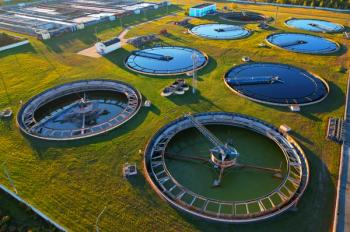
GC
With issues such as food safety pushing gas chromatography to the forefront of the research community, this mature technique has seen something of a renaissance in recent times.
With issues such as food safety pushing gas chromatography to the forefront of the research community, this mature technique has seen something of a renaissance in recent times.
Joining us for this discussion are Daniel W. Armstrong of the University of Texas, Arlington; Mark Taylor of Shimadzu Scientific Instruments, Inc. and Eric Ziegler of PerkinElmer.
What trends have you most intrigued in the GC field?
Armstrong: The recent trends that have resulted in a resurgence in GC R&D are the advent of effective commercial GC x GC (2D-GC) instrumentation and the advent of the first new class of GC stationary phases in decades (i.e., high stability ionic liquids).
Taylor:I would have to say it is the constant evolution of products to meettoday's application demands. For instance, GCs are being improved toallow for faster run cycle times, higher throughput along with greaterreproducibility, and detector sensitivity. Powerful multidimensionalseparation techniques continue to be refined and commercialized, allowingend-users to more easily acquire and apply to their specificchromatographic challenges. GC column development is shifting focus to new phase chemistries in an effort to further the field of separation science.
Ziegler:Certainly productivity is a key driver. Gas chromatographs are one of the most common-place work horses of the laboratory, as such users need results leading to information in a timely fashion. Being that GC is a separation technique, it's not always possible to significantly improve the speed of the chromatography, instead, there is a greater focus being put on the efforts to cut the nonproductive time. Ultimately, users gain productivity through injection-to-injection time reductions without impacting their core methodologies or sacrificing instrument performance.
GC can be used for many different applications, but which does it have the largest impact on (or possible impact)?
Armstrong:Anything involving complex samples (i.e., refined oil products, many complex foods/oils, environmental samples, and especially metabolomics).
Taylor:GC is a mature technique and is an important tool routinely used by manyindustries. One new emerging application area is in the biofuels and biomass research field. Scientists use GC to help in the characterization and monitoring of both gas and liquid phase compounds produced as a result of their fermentation and reactor experiments. This important research field is in the early development stages and I expect GC will continue to be an important tool in their research moving forward.
Ziegler:Environmental and human health are but two examples of areas of focus for GC. The need for clean air to breathe, pure water to drink, and safer foods to eat will keep driving the GC growth. In all of these markets, the use of mass spectrometry as a detector is becoming more significant, driving the need for easier to use tools.
Are there any obstacles standing in the way of GC development?
Armstrong:Better, easier to use software would be helpful.
Taylor:GC development tends to keep pace with technology. As manufacturingprocesses improve, so do the specifications of the latest GC. Forinstance, new electronic components and signal processors have lessnoise associated with them. New materials and cleaner manufacturingprocesses result in better electronic flow controllers that output less electrical and chemical "noise." By incorporating these new technologies into the latest GC, better performance and sensitivity may be realized.
Ziegler:Future improvements for GC throughput will imply the use of shorter capillary columns, faster and more sensitive detectors, and better injectors to reach higher sensitivities. Advances in technology continue to push the boundaries of what's practical, but there will always be a need for more information created at a faster rate.
Many companies launched new products at Pittcon 2010, were there any major breakthroughs in the technology?
Armstrong:The single most impressive breakthroughs are the new ionic liquid columns. They have unique selectivities and higher thermal stabilities than most conventional columns. I believe four types are available now and as many as 10 types could be available by the end of the year.
Taylor:There were new products, but I would classify most of these asincremental improvements.
Ziegler:There have been a number of incremental advances in GC over the past year. The primary focus has been around improving productivity. Productivity can be defined in terms of throughput, capacity, sensitivity, and flexibility leading to better information faster. The challenge is to improve each of these dimensions while making it easier to use.
What is one change/improvement you hope to see in the GC industryover the next few years?
Armstrong:More and better 2D instrumentation and associated data handling capabilities, as well as more compact and sensitive instrumentation. Also, adopting newer stationary phases to solve the more difficult separation problems.
Taylor:As products continue to evolve and improve, I would like to see a"greener" approach to the manufacturing process and use of GC products.New design features should include a reduction in energy consumption,the use of less carrier and detector gases. Also, I’d like to see the further development ofhydrogen as a safe alternative to helium as carrier gas. Finally, asharper focus on the environmental impact of manufacturing andinevitable disposal of GC products as they travel through their lifespan.
Ziegler:Many users struggle in dealing with different software platforms. A unified software interface protocol within the GC manufacturers' community would allow customers to choose the very best technology to meet their needs without being locked into a specific vendor.
If you are interested in participating in any upcoming Technology Forums please contact Electronic Editor
Newsletter
Join the global community of analytical scientists who trust LCGC for insights on the latest techniques, trends, and expert solutions in chromatography.





